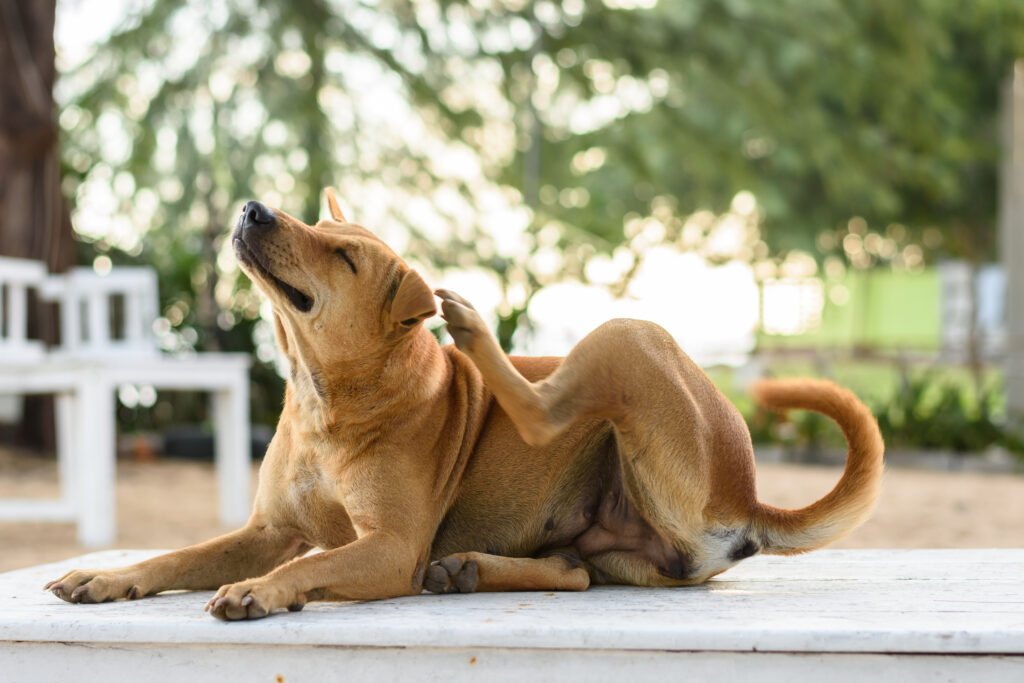If only pet allergies were relegated to a certain season (ahem, we’re looking at you, spring)… The truth is, however, they can affect any pet at any time throughout the year. Fall pet allergies are particularly irritating because there isn’t ever a break between pollinating autumnal weeds, such as ragweed, sagebrush, thistle, and cocklebur, that line thoroughfares and paths alike. But there is power in preparation – and when you know the source of the problem, treatment is more effective.
What’s Ailing You, Buddy?
Fall pet allergies can be enormously subtle, or they can really knock your pet upside down. When affected by allergens you’ll be quick to notice these symptoms in your pet:
- Sneezing or coughing over and over
- Tearing eyes
- Excessive licking and scratching at a certain spot, resulting in hair loss or patchy areas or fur color change from white to brown
- Red skin or rashy areas on the paws or belly
- Red eyes that look irritated or itchy
- Problems with the ears, including infection
Fall pet allergies are triggered by seasonal pollens, but they can also develop in an animal exposed to dust mites or mold.
Reacting To Fall Pet Allergies
We can simply pick up some over the counter medication for ourselves, but it’s not safe to do that for pets. Please contact us as soon as you notice that your pet is suffering from allergies; we can get started right away to control symptoms and prevent secondary bacterial or yeast infections stemming from untreated allergies.
The Scope Of Treatment
Depending on the state of your pet’s skin and symptoms, we may proceed with allergy testing. Results will help us address his or her dermatology needs and promote overall wellness. It’s just no fun being itchy, and the following modes of treatment typically help mitigate fall pet allergies:
- Topical treatments, such as soothing shampoos
- Antihistamines (remember, these should only be administered only under veterinary guidance)
- Fatty acids, such as omega-3, and other supplements
- Steroids
What You Can Do At Home
Your pet will appreciate your attention to the following areas to help combat allergies:
- Wash pet’s bedding on a regular schedule, adding more cycles if he or she gets wet this fall
- Check your house for any mold growth and fix any cracks allowing moisture to accumulate
- Run indoor fans, especially when the shower is on
- Shampoo your carpets
Pets of all ages can develop sudden fall allergies, but it’s not the end of the world. While you can’t control the wind, moisture, dying plants or trees, or blooming weeds, you can get a handle on unfolding symptoms.
If our veterinarians or staff can help with fall pet allergies, please let us know. We are always happy to help!


